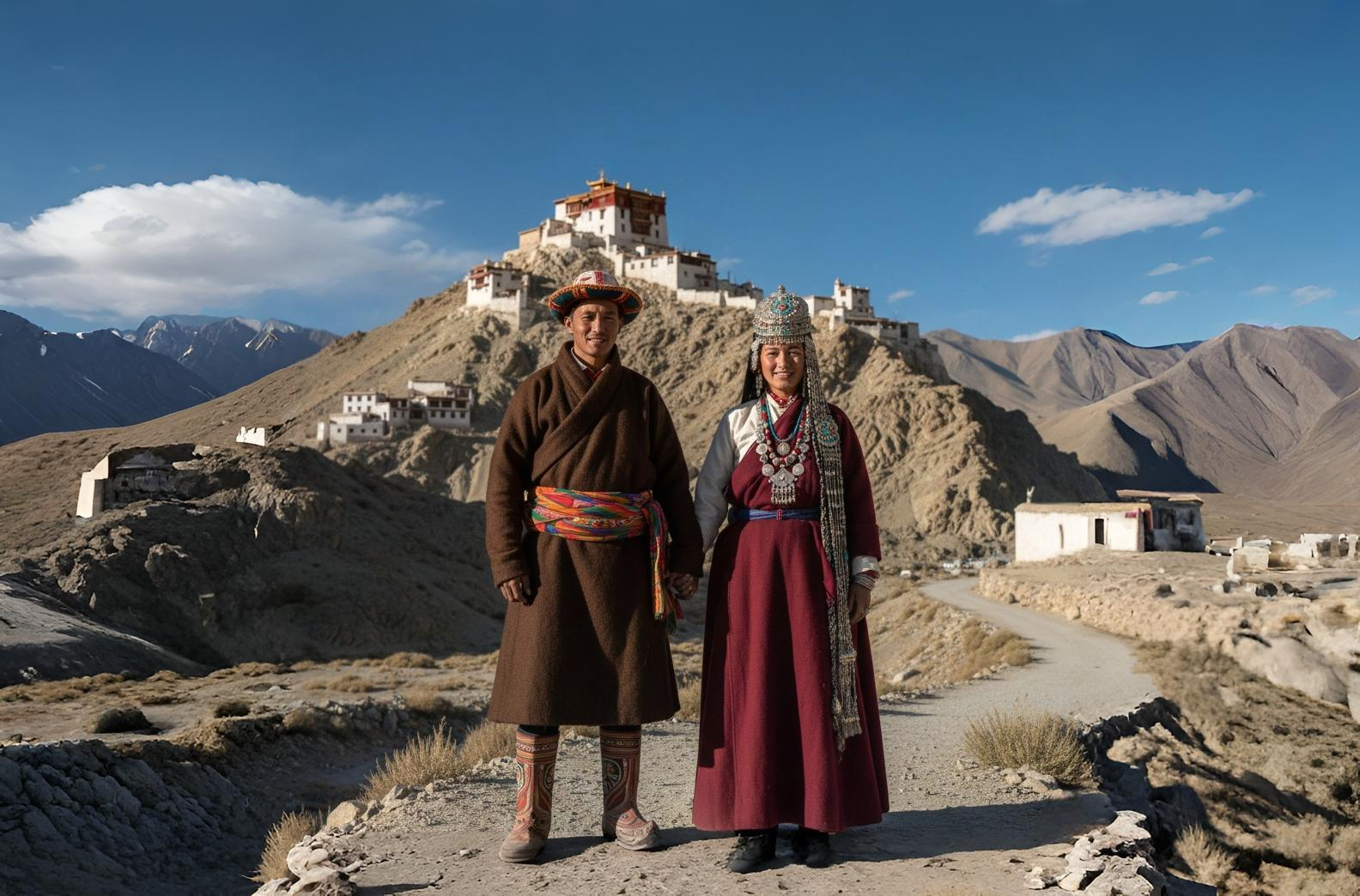Ladakh’s ruthless desert climate at high elevation is renowned for its harsh environment and extreme conditions. The traditional dress of Ladakh is not simply a style statement but also a protective covering against its merciless climate. Every robe, headgear, and accessory has evolved to protect the people from freezing gusts of wind while also showcasing the cultural richness of the place.
Men’s and women’s wear both show community identity, marriage status, and spirituality. The symbolism embedded in their robes and jewellery is no less than their functionality. In this blog, we will see each and every aspect of Ladakh clothing from casual daily wear to elaborate wedding wear and even modern couture, giving you a comprehensive guide to the living heritage of Ladakh.
Men’s Traditional Dress in Ladakh
Goncha (Men’s Robe)
The Ladakh traditional dress for males is centred around the Goncha, a floor-length wool robe of generally earthy colours, including maroon, brown, or grey. Tied with a waist belt known as Skeyraks, it is loose but sufficiently warm, perfect for everyday activities and mountainous living.
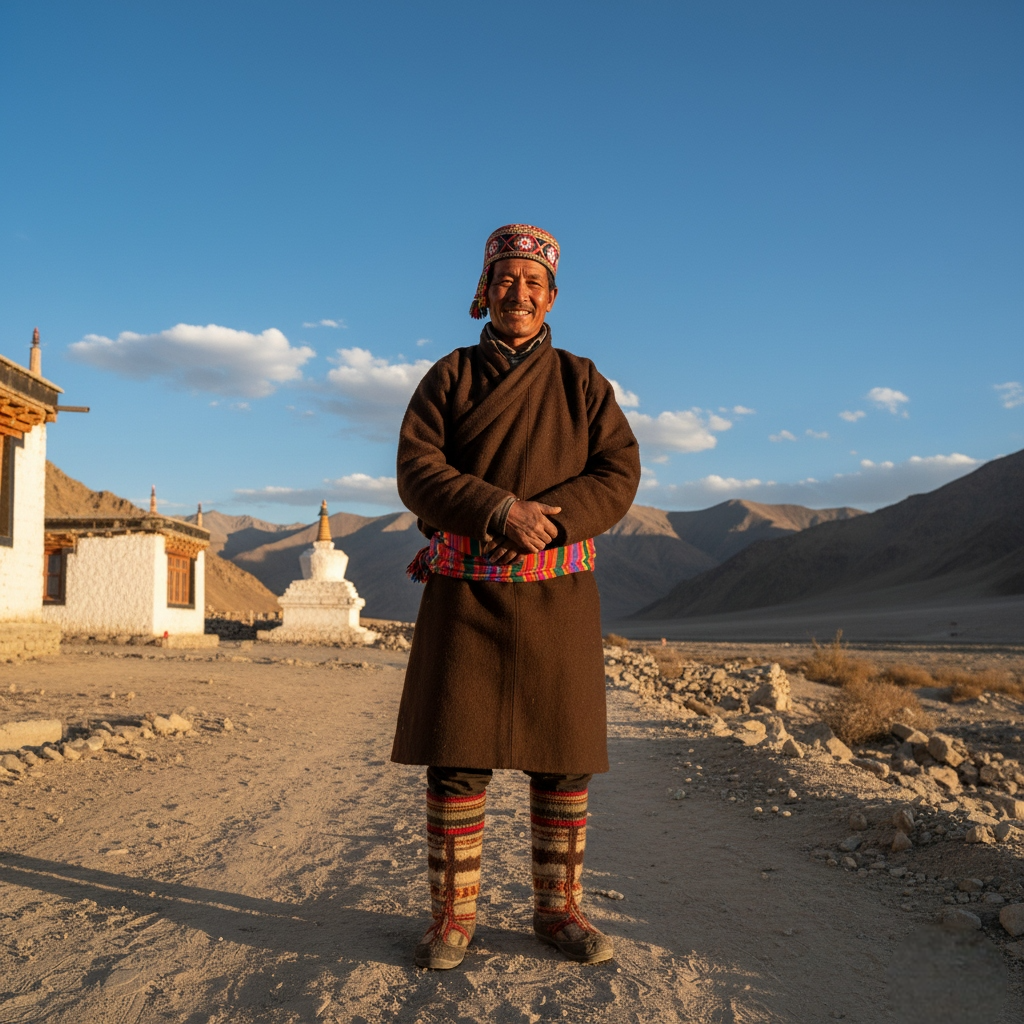
Accessories for Men
Men usually match the Goncha with Tipi (a warm felthy hat), boots referred to as Pabu, and colored sashes. The accessories add both warmth and elegance, affirming their ethnic status.
Men’s Wedding Attire
In wedding ceremonies, the Goncha changes into a colourful brocade robe with silk sashes and elaborate hats. The Ladakhi dress of men on special occasions is a symbol of prosperity and festivity.
Women’s Traditional Dress in Ladakh
Sulma (Women’s Robe)
The Ladakh traditional dress for female is the Sulma, a flared woollen robe, normally dyed in bright colours. It is normally worn over a Tilin (blouse).
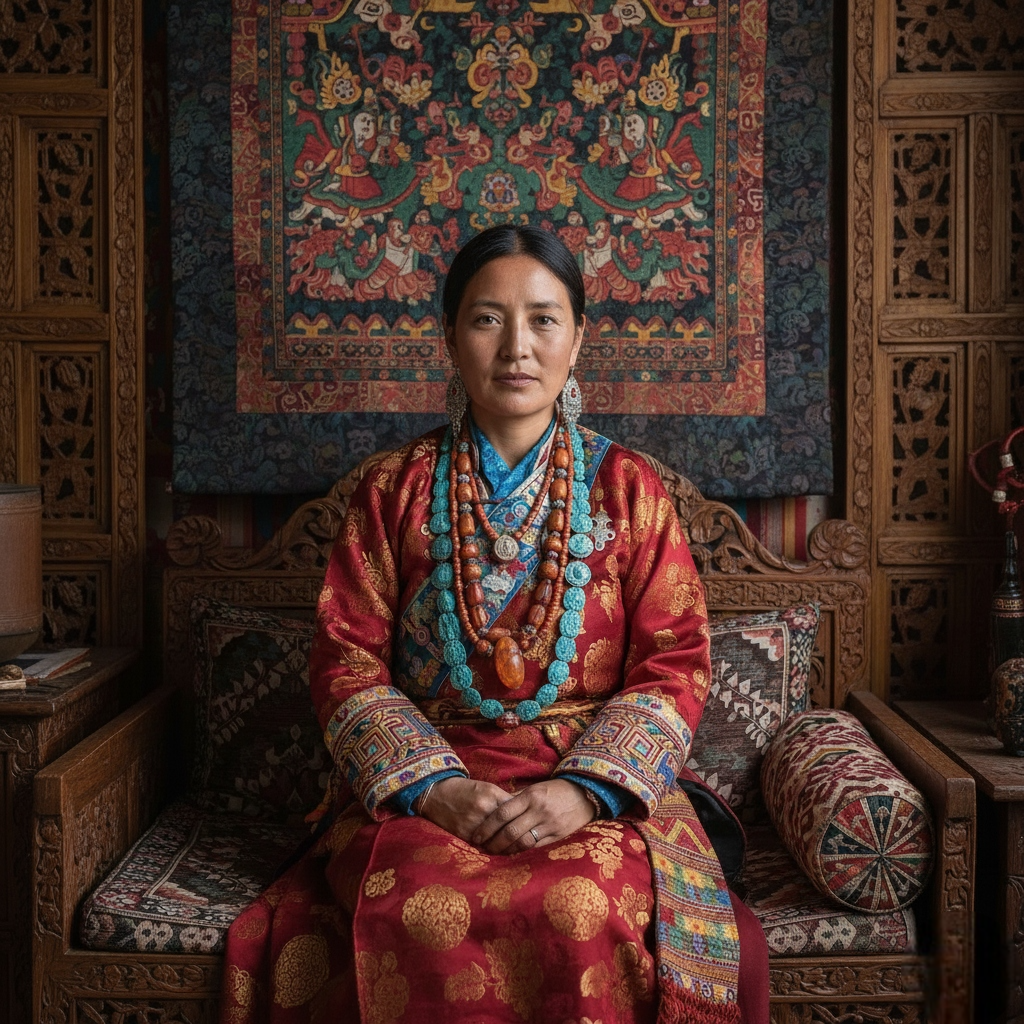
Headdresses
- Perak: Buddhist bridal headdress composed of turquoise stones, handed down through generations, representing wealth.
- Jugin: Muslim bridal headdress decorated with pearls and embroidered veils.
- Tipi: Brocade hats in bright colours, the yellow Serpo Tipi being popular with Zanskari women.
- Tepi: Worn by the Brokpa people, adorned with flowers, feathers, and silver decorations.
Also Read: 16 Famous and Traditional Food of Ladakh
Accessories & Jewellery
Women adorn themselves with Kau (protective amulets), silver decorations, and woollen or silk girdles.
Women’s Wedding Dress
A bride adorns herself with the Sulma along with the Perak, Kau, and elaborate jewellery, and the traditional dress of Ladakh looks every inch the queen on special occasions.
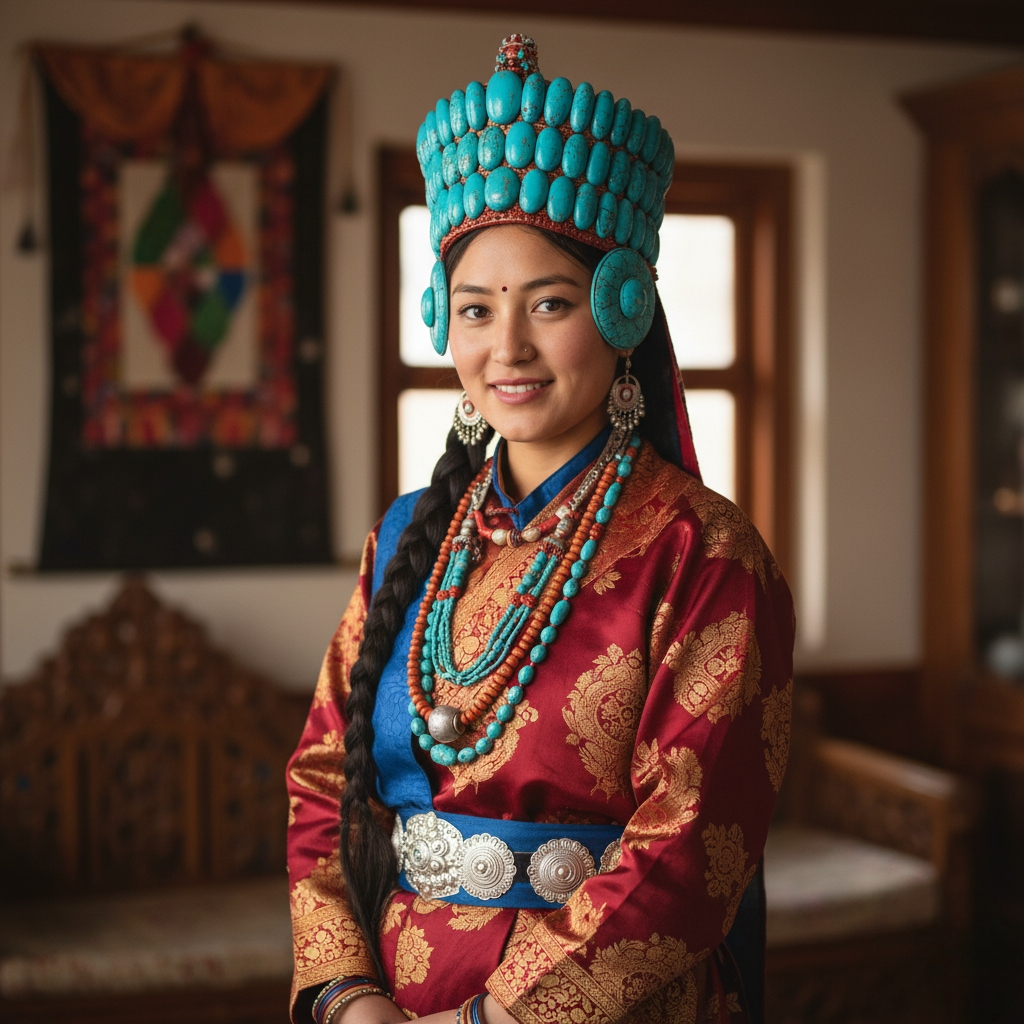
Nomadic & Regional Variations of Ladakhi Dress
- Changpa Nomads (Kos Kar): Changpa pastoralists wear the Kos Kar, an inside-wool sheepskin robe, appropriate for cold high-altitude plains.
- Lokpa & Yosgar Capes: The woollen capes are worn by women in cold areas to protect them in winter.
- Zanskari Women (Serpo Tipi): Zanskari women wear the yellow felt Serpo Tipi hat, the characteristic hat of the Ladakhi dress.
- Brokpa People (Full Costume): The dress of the Brokpa tribe consists of colourful robes, silver jewellery, and the floral Tepi headdress, reflecting their ethnic consciousness.
Ladakh’s Traditional Footwear
Pabu
The most popular footwear is the Pabu, made of yak or goat leather boots, lined with wool, and colored using the age-old thikma method.
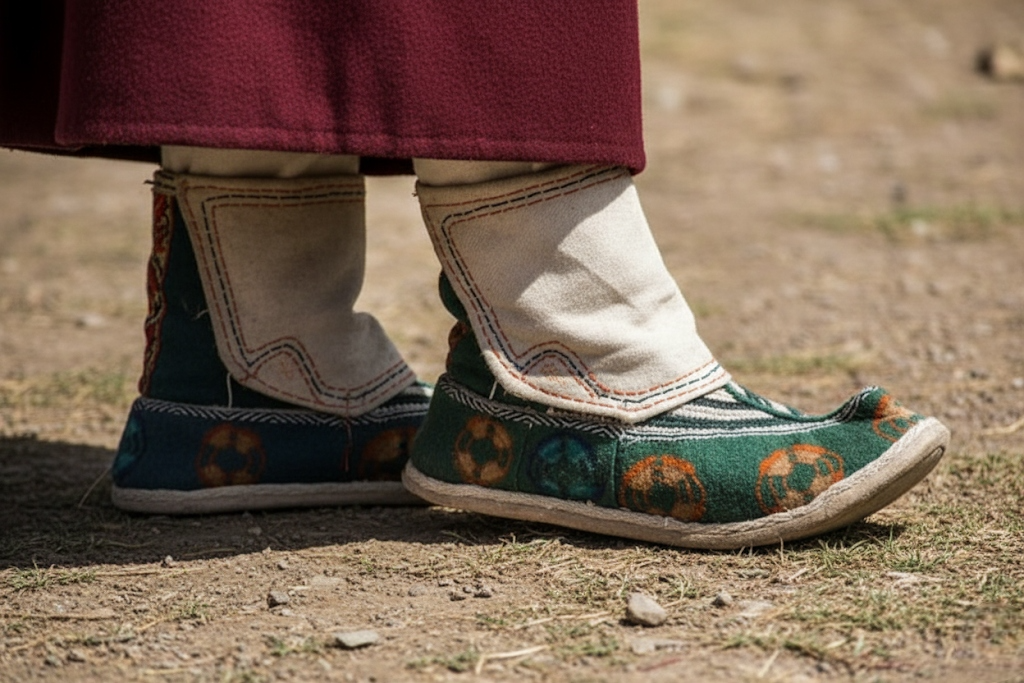
Special Sections
Traditional Dress of Children
Children dress in miniature Gonchas and Sulmas, usually made of plain wool, a smaller version of adult dress.
Seasonal Dress in Ladakh
Light cotton or wool is needed in the summer, and thick sheepskin robes and cloaks are needed in the winter.
Textiles and Handicrafts
In their traditional craftsmanship, the local artisans employ brocade, silk, and yak wool with vibrant thikma dye designs.
Modern & Designer Ladakhi Clothing
In the past few years, fashion designers have reinterpreted Ladakhi clothing with a modern spin. Brands like Jigmat Couture, Namza Couture, and Zilzom fuse the traditional elements with trendy cuts. These designers make sure that the traditional dress of Ladakh doesn’t get lost but stays trendy and relevant for the current generation.
Also Read: 30 Famous and Traditional Festivals of Ladakh
Symbolism & Cultural Significance of Ladakhi Dress
The Ladakh traditional dress, female and male attire, are indicators of social standing, affluence, and group identity. A Perak signifies inheritance and wealth, a Sulma marital status, and Brokpa ethnic pride. Dress is functional as well as highly symbolic in Ladakh.
Dream Land – Your Gateway to Ladakh
At Dream Land, we don’t just have Ladakh trekking packages, we enable travellers to experience the heart of the place. As a local trekking company in Ladakh with local roots, we pride ourselves on passing on the culture that stands behind every Goncha and Perak that you encounter along your path. Wearing it during festivals, homestays, or weddings is as Ladakhi as its landscapes are. Our guides describe the legacy of each Ladakhi dress, enriching your trip and making it more real.
Conclusion
Ladakh’s traditional attire is a synthesis of practicality, ingenuity, and cultural meaning. Women adorn themselves with vibrant jewellery, Sulmas, and Peraks, while men wear robust Gonchas and ornate wedding gowns. The diversity of Ladakhi dress is highlighted by the diverse communities, which include Changpas and Brokpas.
Ladakh apparel, whether it be through its couture heritage or its native craftsmanship, is a representation of resilience and identity. Witness it firsthand at weddings, local festivals, or even by going to modern designer studios. Plan your next trip with Dream Land and learn how mountains are not alive only in landscapes but also in the dynamic yarns of Ladakhi heritage.
FAQs
What is the traditional dress of Ladakh?
For males, the Goncha with belts and Pabu boots; for females, the Sulma with Perak or other headdresses.
How to dress up in Ladakh (for tourists)?
The best is layered warm clothing, but during festivals, the tourists can hire or purchase a Ladakhi dress to be part of the culture directly.
What is the tradition of Ladakh?
Monastic festivals, colourful dances, and cultural expression through dress, craft, and rituals form the traditions.
What is the art form of Ladakh drawing?
The traditional art form of Ladakh is Thangka painting, showing Buddhist deities, mandalas, and stories in colorful, detailed scrolls.

